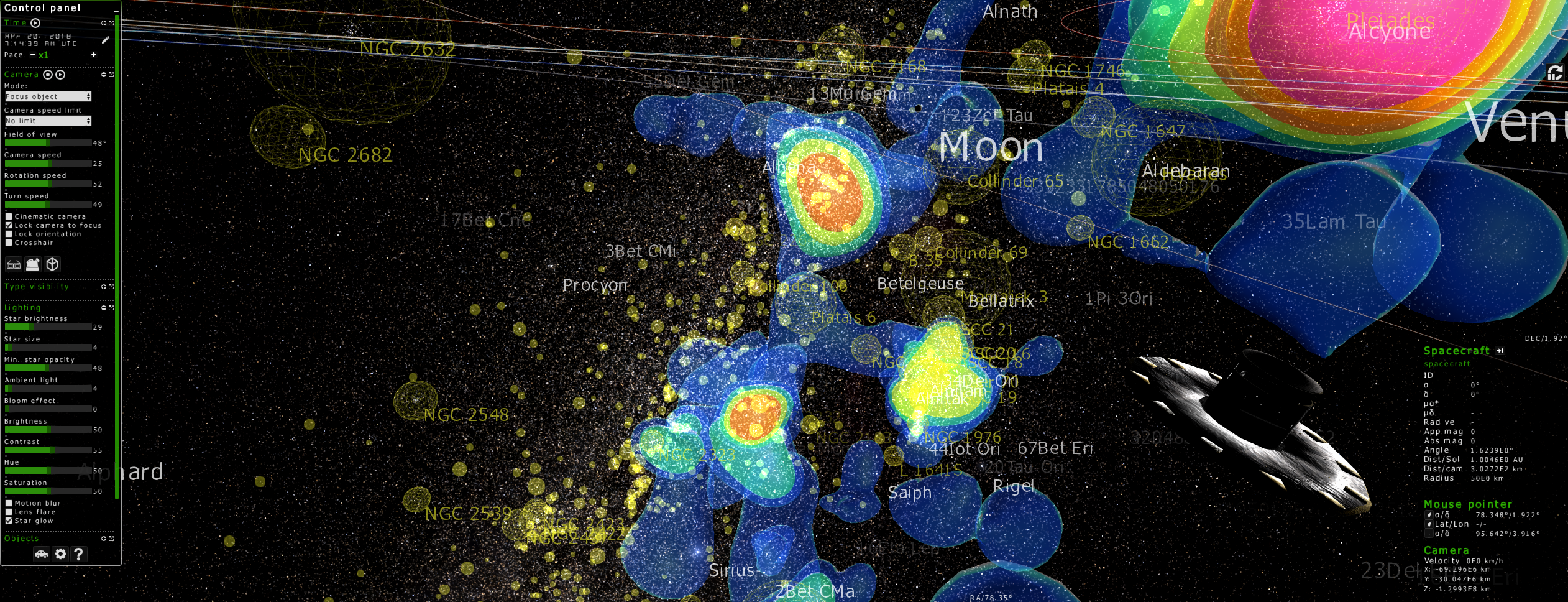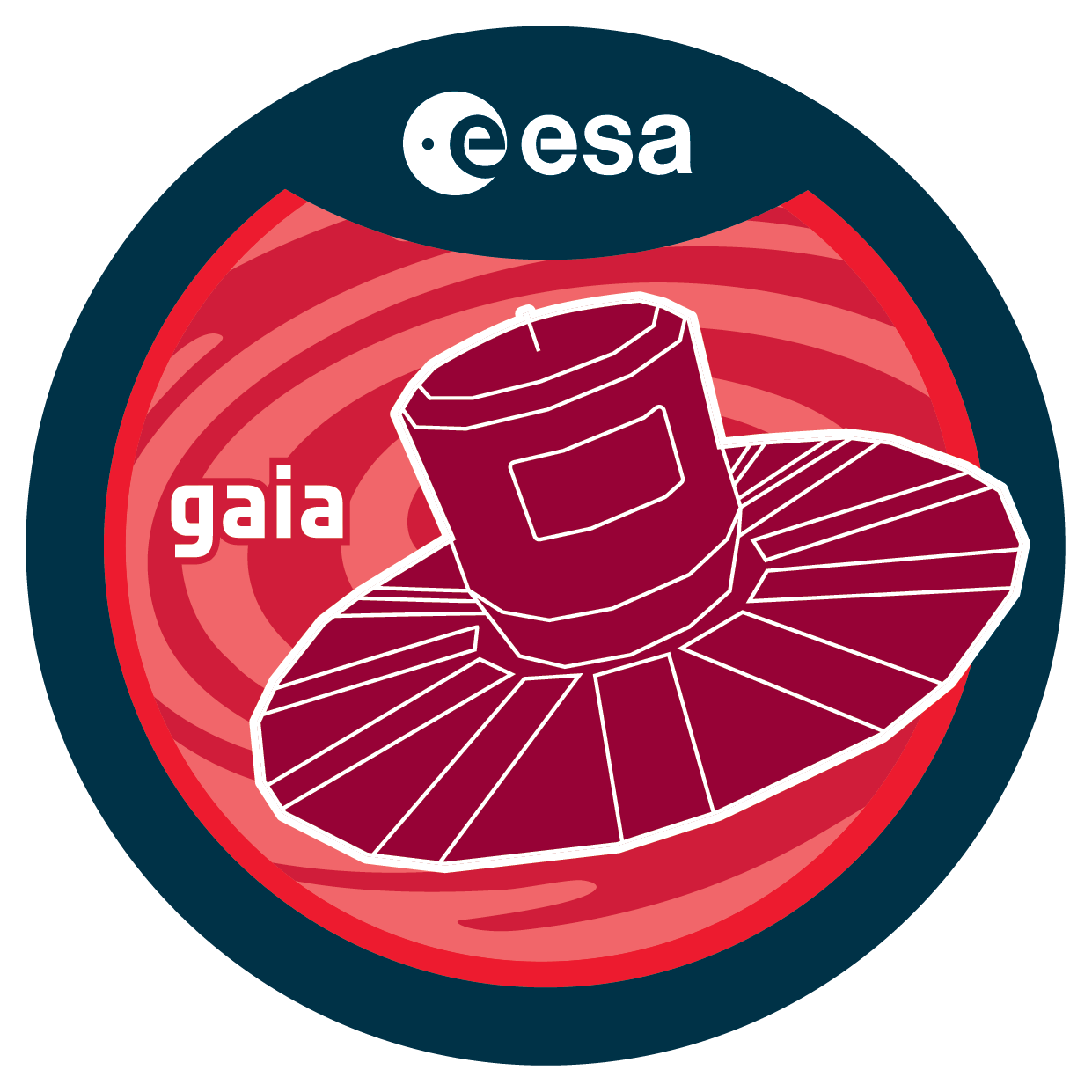GaiaDR2_GaiaSky - Gaia
Visualising the Gaia data with Gaia Sky
This is a screenshot of the Gaia Sky application in combination with Gaia Data Release 2 data. Videos produced with Gaia Sky are available at the bottom.
Gaia Sky is an open-source endeavour developed since 2014 in the framework of the Data Processing and Analysis Consortium of ESA's Gaia cornerstone astrometry mission. The main aim of Gaia Sky is to deliver an off-the-shelf visualisaton of the Gaia catalogue, and to aid in the production of outreach material. However, it has a wide range of other applications, from scientific to purely recreational.
Gaia Sky contains a simulation of our Solar System wih all its planets, dwarf planets, some satellites, moons, asteroids, trajectories, locations and more. It also offers a levels-of-detail-based view into the second Gaia data release (several subsets of Gaia DR2 are offered as Gaia Sky catalogues, with different selections based on parallax relative errors, ranging from a few million to hundreds of millions of stars), and additional astronomical and cosmological data such as the star clusters (MWSC), nearby galaxies (NBG) or distant galaxies and quasars (SDSS).
The visualisation engine is ready to represent the multi-dimensional nature of Gaia data, with positions, parallaxes, proper motions (tangential velocities projected on the sky), radial velocities (if available), magnitudes and colors. The software also includes a stereoscopic mode with five 3D profiles, a planetarium mode and a 360 panorama mode with three different projections. A scripting engine is also built-in, with a comprehensive API, and a Gaia Sky VR spinoff, albeit still in the works, is already quite functional.
The software is available for Linux, macOS and Windows. The minimum system requirements for version 2.0.0 are the following:
- CPU: Intel core i5 3rd generation
- GPU: Intel HD 4000, Nvidia GeForce 9800 GT, Radeon HD 5670 / 1 GB VRAM / OpenGL 3.0
- RAM: 4+ GB RAM
- Disk: 1 GB of free space
Gaia Sky homepage and downloads
Videos produced with Gaia Sky
Comparison of the Gaia DR1 TGAS catalogue with the new Gaia DR2 catalogue
Demonstration of parallaxes and proper motion in the northern sky
Demonstration of parallaxes and proper motions - 360 degrees video
Demonstration of the Large Magellanic Cloud rotation
Tour through the Gaia DR2 asteroids
Credits: ESA/Gaia/DPAC, Toni Sagrista Selles, Stefan Jordan
Published: 25 April 2018
- Removed a total of (19) style text-align:center;
- Removed a total of (4) style text-align:justify;
Image of the Week Archive
- Removed a total of (1) border attribute.
- Removed a total of (1) cellpadding attribute.
- Removed a total of (1) cellspacing attribute.








































 Sign in
Sign in
 Science & Technology
Science & Technology

